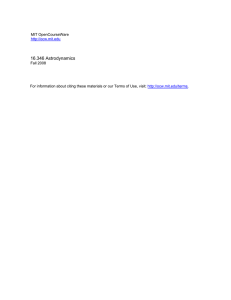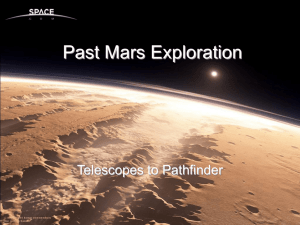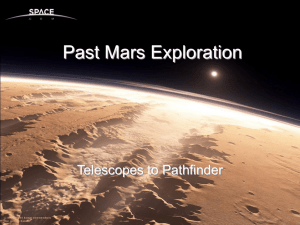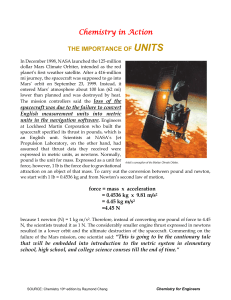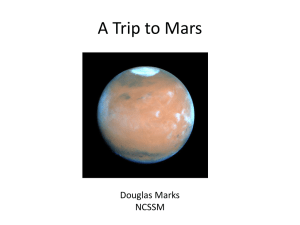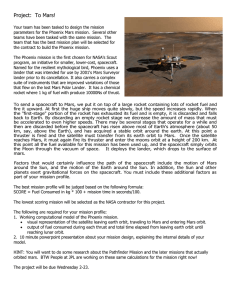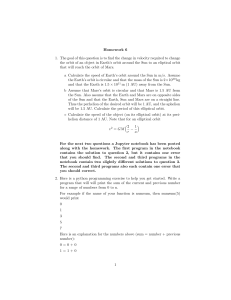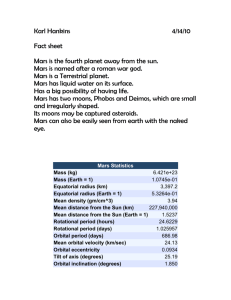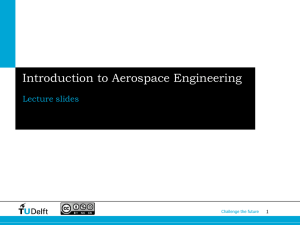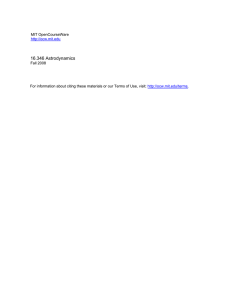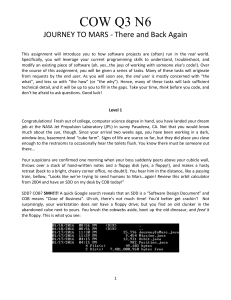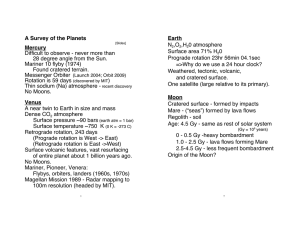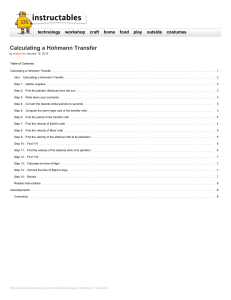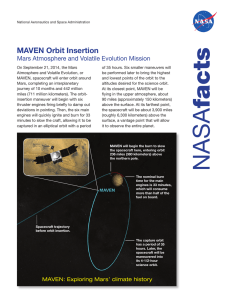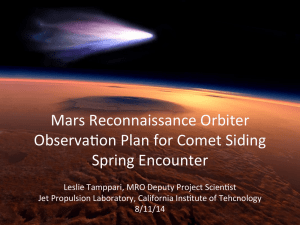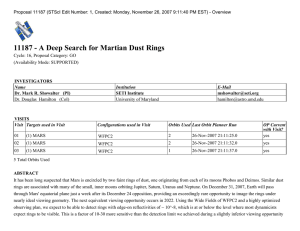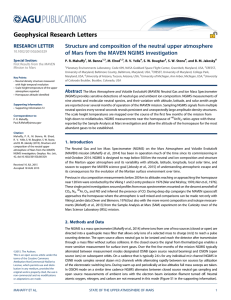Trip to Mars worksheet April 21, 2005 Name ______________ Box ______
advertisement
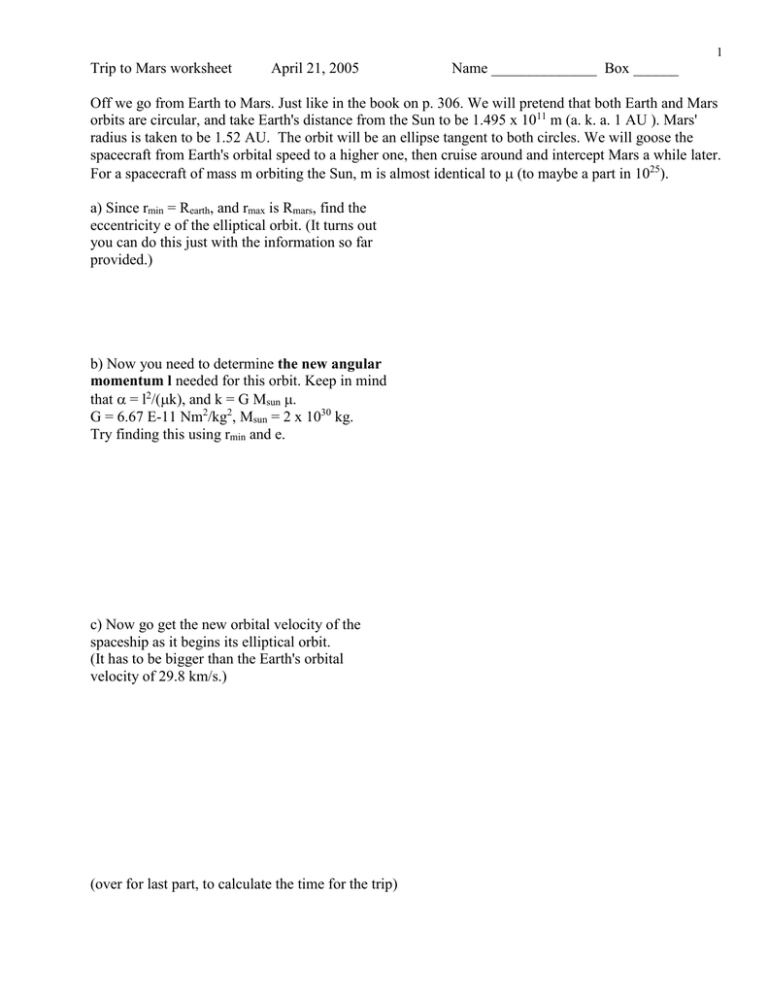
1 Trip to Mars worksheet April 21, 2005 Name ______________ Box ______ Off we go from Earth to Mars. Just like in the book on p. 306. We will pretend that both Earth and Mars orbits are circular, and take Earth's distance from the Sun to be 1.495 x 1011 m (a. k. a. 1 AU ). Mars' radius is taken to be 1.52 AU. The orbit will be an ellipse tangent to both circles. We will goose the spacecraft from Earth's orbital speed to a higher one, then cruise around and intercept Mars a while later. For a spacecraft of mass m orbiting the Sun, m is almost identical to (to maybe a part in 1025). a) Since rmin = Rearth, and rmax is Rmars, find the eccentricity e of the elliptical orbit. (It turns out you can do this just with the information so far provided.) b) Now you need to determine the new angular momentum l needed for this orbit. Keep in mind that = l2/(k), and k = G Msun . G = 6.67 E-11 Nm2/kg2, Msun = 2 x 1030 kg. Try finding this using rmin and e. c) Now go get the new orbital velocity of the spaceship as it begins its elliptical orbit. (It has to be bigger than the Earth's orbital velocity of 29.8 km/s.) (over for last part, to calculate the time for the trip) 2 d) How long does the trip take? Calculate the area to be covered. Calculate the rate at which area is swept out and find the time.
